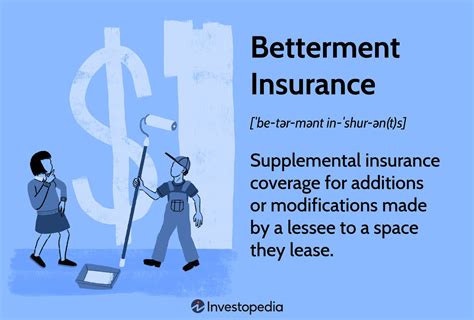Learn about windstorm insurance coverage options, factors affecting premiums, claims process, and tips for choosing the right policy. Get the protection you need.
Understanding Windstorm Insurance
Contents
Windstorm insurance is a type of insurance policy that provides coverage for damage caused by high winds and hurricanes. This type of insurance is typically necessary for homeowners who live in areas prone to severe windstorms, such as coastal regions.
When choosing a windstorm insurance policy, it’s important to understand the coverage and policy options available. Some policies may cover only the structure of the home, while others may also include coverage for personal belongings. It’s crucial to carefully review the policy details to ensure that you have the right level of protection for your home and possessions.
Several factors can affect the premiums for windstorm insurance, including the location of the property, the age and condition of the home, and the deductible chosen. It’s essential to consider these factors when selecting a policy to ensure that you are getting the best coverage at the most affordable price.
In the event of windstorm damage, the claims process and documentation required can be complex and time-consuming. It’s important to be prepared by understanding the steps involved in filing a claim and having the necessary documentation readily available. This can help expedite the claims process and ensure that you receive the compensation you are entitled to.
When choosing the right windstorm insurance policy, there are several tips to keep in mind. It’s important to shop around and compare quotes from different insurers to find the best coverage at the most competitive price. It’s also crucial to carefully review the policy terms and conditions to ensure that you have a clear understanding of the coverage provided.
Coverage and Policy Options
Windstorm insurance provides homeowners with financial protection against damage caused by strong winds, hurricanes, and tornadoes. When considering windstorm coverage, there are several policy options to choose from. One option is to include windstorm coverage as part of a comprehensive homeowners insurance policy. Another option is to purchase a standalone windstorm insurance policy to specifically cover damage from wind-related events.
Some homeowners may opt for a named-peril policy, which only covers damage from specific perils, such as windstorms. Others may choose an all-risk policy, which covers damage from all perils unless specifically excluded. Additional policy options may include coverage for temporary relocation expenses, debris removal, and replacement cost coverage for damaged property.
It’s important for homeowners to carefully review and compare different policy options to ensure they have the coverage they need to protect their property and belongings from wind-related damage. They should also consider their geographic location and the frequency of severe weather events in their area when selecting a windstorm insurance policy.
Some insurance companies may offer additional endorsements or riders that can be added to a windstorm insurance policy to provide more comprehensive coverage. These endorsements may include coverage for damage to landscaping, outbuildings, and personal property. Homeowners should carefully review the terms and conditions of these endorsements to understand their coverage limits and exclusions.
Factors Affecting Premiums
Factors Affecting Premiums
When it comes to windstorm insurance, there are a number of factors that can significantly impact the cost of your premiums. It’s important to understand these factors so that you can make informed decisions about your coverage and budget accordingly. One of the most significant factors affecting premiums is the location of your property. Homes located in areas prone to frequent and severe windstorms are typically at a higher risk, and as a result, their insurance premiums are often higher.
Another key factor that can affect windstorm insurance premiums is the age and condition of your home. Older homes may be more susceptible to wind damage, which can increase the risk for insurers and result in higher premiums. Similarly, the type of construction and materials used in your home can impact your premiums. Homes constructed with wind-resistant materials and techniques may be eligible for lower premiums, as they are less likely to incur costly damage in a windstorm.
Additionally, the value of your home and the amount of coverage you choose to carry can also impact your premiums. Higher coverage limits will naturally result in higher premiums, as the insurer is taking on a greater financial risk. Similarly, the deductible you select can influence your premiums. Opting for a higher deductible can lower your premiums, but it’s important to weigh the potential cost savings against the risk of having to pay a larger out-of-pocket expense in the event of a claim.
Lastly, your claims history and credit score can also affect your windstorm insurance premiums. Insurers may take into account any previous windstorm-related claims you’ve made, as well as your credit score, when determining your premiums. A history of filing claims or a poor credit score can result in higher premiums, as insurers may view you as a higher risk policyholder.
Understanding these factors and how they can impact your windstorm insurance premiums is crucial in making informed decisions about your coverage. By evaluating these factors and working with a knowledgeable insurance agent, you can find the right balance of coverage and cost for your specific needs.
Claims Process and Documentation
When it comes to filing a claim for windstorm insurance, it’s important to understand the process and necessary documentation. The first step in the claims process is to contact your insurance company as soon as possible after the damage occurs. You will need to provide them with detailed information about the damage, including photographs if possible. It’s important to keep records of all communication with your insurance company, including the date and time of the call, the name of the representative you spoke with, and the details of the conversation.
Once you have filed your claim, the insurance company will typically send an adjuster to assess the damage. It’s important to cooperate fully with the adjuster and provide them with any information or documentation they request. This may include estimates from contractors or other professionals, as well as receipts for any temporary repairs you have made to prevent further damage.
After the adjuster has completed their assessment, the insurance company will make a decision on your claim. If your claim is approved, you will receive a payment to cover the cost of repairs or replacement of the damaged property. It’s important to carefully review the payment details and ensure that you are being adequately compensated for the damage.
Throughout the claims process, it’s important to keep thorough documentation of all expenses related to the damage. This may include receipts for repairs, estimates for replacement costs, and any other relevant documentation. In the event that your claim is denied, having thorough documentation can be crucial if you need to appeal the decision or seek legal assistance.
Tips for Choosing the Right Policy
When it comes to choosing the right windstorm insurance policy, there are several factors to consider. One important factor to keep in mind is the coverage options offered by the policy. It is crucial to understand what is included in the coverage and what is not, as this will impact how well you are protected in the event of a windstorm. Additionally, the premium rates for the policy should be carefully considered. You want to find a policy that offers the right balance of coverage and affordability. Research the claims process for each policy and consider the level of support and guidance offered to policyholders when filing a claim.
Another tip for choosing the right windstorm insurance policy is to carefully review the policy options available. Some policies may offer additional coverage or endorsement options that could be beneficial for your specific needs. Be sure to thoroughly read through the policy options and consider which would be most valuable for your situation. Furthermore, take note of any exclusions or limitations within the policy, as these can impact your coverage in the event of a windstorm.
It is also important to consider the financial stability of the insurance company offering the policy. You want to choose a reputable and financially secure company that will be able to fulfill their obligations in the event of a windstorm. Research the company’s financial ratings and customer reviews to gauge their reliability and customer satisfaction.
Finally, take the time to compare different windstorm insurance policies from multiple providers. Each policy will have its own unique offerings and limitations, so it is important to compare them side by side to determine which provides the best overall value and protection for your needs.













